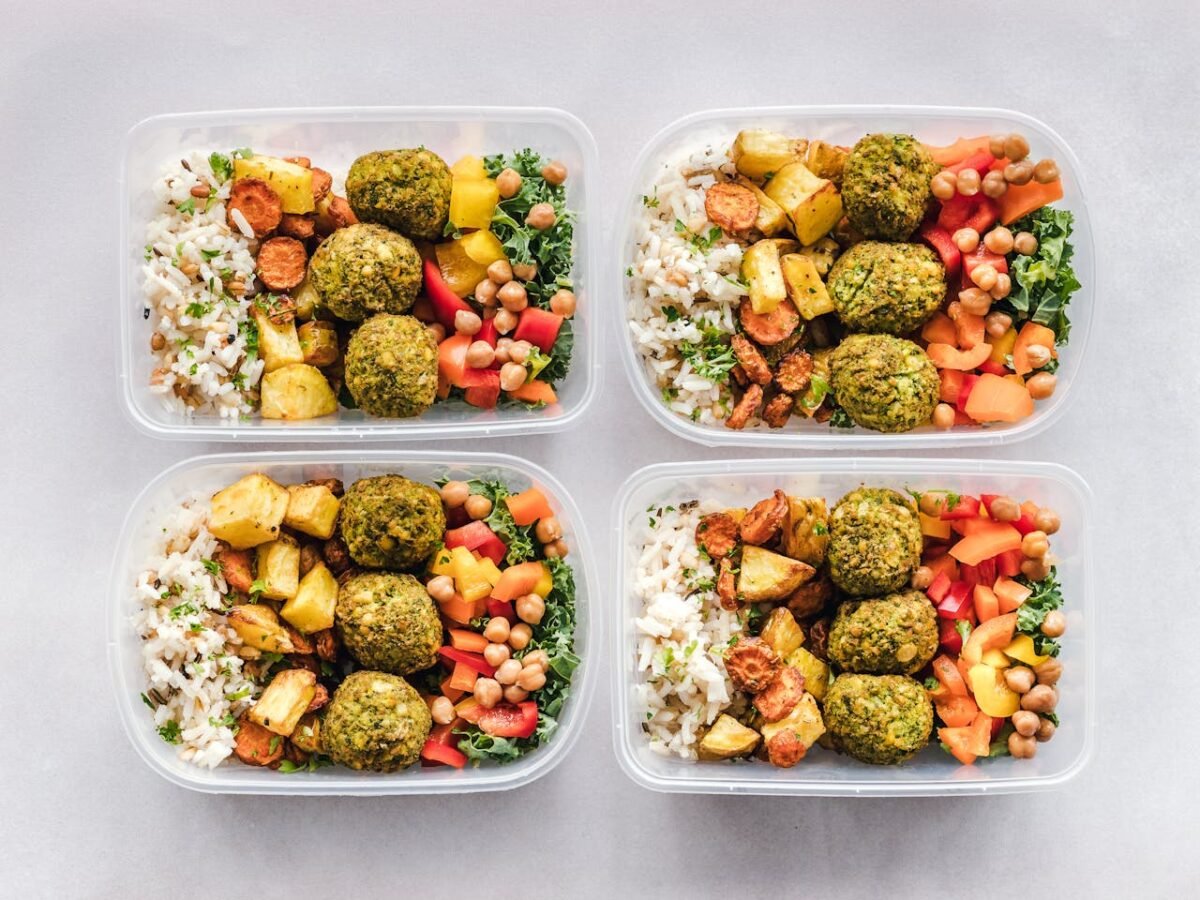Diet: It’s Not a Dirty Word
Let’s talk about diet. It doesn’t have to be a scary word or a punishment. It’s really just about what you eat and drink. It’s like choosing what to wear – some choices make you feel good, others not so much.
A good diet is like building a strong house. You need a mix of everything – proteins for the walls, carbs for the roof, and healthy fats for the foundation. And don’t forget the vitamins and minerals as your interior design!
So, let’s ditch the fad diets and focus on eating real, whole foods. It’s all about balance, variety, and enjoying your meals!
So, you’ve heard the buzz about eating just one meal a day. It sounds extreme, right? Kind of like surviving on a single energy bar for 24 hours. But before you dismiss it as a fad diet, let’s break it down.
One Meal a Day (OMAD) is a form of intermittent fasting where you squeeze all your daily calories into a single meal.It’s like a food marathon followed by a 23-hour food coma. Some people swear by it for weight loss, while others think it’s a recipe for disaster.
Let’s Talk About OMAD: Pros, Cons, and Alternatives
One Meal a Day (OMAD) is definitely a head-turner. It’s like culinary cliff diving – exciting, but also a bit terrifying.While it can be effective for weight loss, it’s not without its challenges.
Pros of OMAD:
- Weight loss: By restricting your eating window, you naturally consume fewer calories, which can lead to weight loss.
- Improved digestion: Giving your gut a long break can potentially ease digestive issues.
- Reduced inflammation: Some studies suggest fasting can lower inflammation in the body.
- Mood enhancement: Stable blood sugar levels, often achieved through OMAD, might contribute to improved mood.
- Boosted energy: Entering ketosis can provide a sustained energy source.
- Potential for autophagy: This cellular cleanup process might be stimulated during fasting.
- Lower risk of chronic diseases: Some research hints at a possible reduced risk of conditions like Alzheimer’s and Parkinson’s.
- Skin benefits: Fasting might improve skin health by reducing oxidative stress.
Cons of OMAD:
- Difficult to get all your nutrients in one meal
- Can lead to social isolation
- Unsustainable for many people
Before you dive in, it’s important to weigh the pros and cons and consider your overall health goals. There are other forms of intermittent fasting that might be a better fit for your lifestyle.
OMAD can trigger ketosis by restricting calorie intake to a narrow window. When your body doesn’t have enough glucose from carbohydrates, it turns to fat for energy, a process called ketosis.
Ketosis does offer some potential benefits beyond weight loss, including improved blood sugar control, increased energy levels, and reduced appetite. However, it’s essential to approach OMAD and ketosis with caution. Not everyone is suited for this type of eating pattern, and it’s crucial to listen to your body and consult with a healthcare professional before making significant changes to your diet.
Creating a Nutrient-Packed OMAD Meal
If you’re still keen on trying OMAD, let’s make sure you’re getting the most out of that one meal. We can focus on building a balanced meal with protein, carbs, and healthy fats, incorporating a variety of nutrient-dense foods, tips for meal planning and preparation.
Let’s create a culinary masterpiece!
To make the most of your one daily meal, we need to pack it with nutrients, flavor, and satiety. Here’s a breakdown of what to include:
Essential Components:
- Protein: This keeps you feeling full and supports muscle repair. Opt for lean sources like chicken, fish, tofu, or lentils.
- Healthy Fats: These provide sustained energy and aid in nutrient absorption. Include avocados, nuts, seeds, and olive oil.
- Complex Carbohydrates: These provide sustained energy and fiber. Choose whole grains like brown rice, quinoa,or whole-wheat bread.
- Fiber: This helps regulate digestion and keeps you feeling full. Load up on vegetables, fruits, and whole grains.
- Vitamins and Minerals: Ensure a diverse range of fruits and vegetables to cover your nutrient needs.
Building Your Meal:
- Base: Choose a hearty grain or legume as your foundation.
- Protein: Add a generous portion of your chosen protein source.
- Veggies: Incorporate a variety of colorful vegetables for maximum nutrient intake.
- Healthy Fats: Drizzle with olive oil or add a handful of nuts or seeds.
- Flavor: Experiment with herbs, spices, and sauces to enhance taste.
Example OMAD Meal:
Mediterranean Bowl: Brown rice, grilled chicken or salmon, roasted chickpeas, cucumber, tomato, red onion, kalamata olives, feta cheese, and a lemon-tahini dressing.
Meal Prep Plan: How I Prep a Week of Easy Mediterranean Diet Meals in Just 2 Hours
I’ve Been Intermittent Fasting For Over a Year, and This Is What I Eat in a Day
Tips for Success:
- Meal Prep: Prepare ingredients in advance to save time.
- Portion Control: Be mindful of portion sizes to meet your calorie goals.
- Hydration: Drink plenty of water throughout the day.
- Supplements: Consider a multivitamin to ensure you’re getting all necessary nutrients.
- Variety: Rotate ingredients to prevent boredom.
Let’s Explore Your Options: Beyond OMAD
Beyond the One Meal a Day Craze
OMAD might be the new kid on the block, but it’s definitely not the only way to reap the rewards of intermittent fasting.There are other fasting methods out there that might suit your lifestyle better.
Think of it like choosing a workout routine: Some people love high-intensity interval training, while others prefer yoga. It’s all about finding what works for you.
Let’s talk about a few popular alternatives:
The 16/8 Method: This is like a gentle introduction to fasting. You fast for 16 hours and eat within an 8-hour window. It’s a popular choice because it’s relatively easy to fit into your daily routine.
Imagine waking up, sipping on some coffee or tea, and not thinking about food until lunchtime. By the time evening rolls around, you’ve naturally reduced your calorie intake without feeling overly deprived.
It’s not a strict diet, but a lifestyle tweak. You can still enjoy your favorite foods, just within a specific timeframe.
The 5:2 Diet: This one’s a bit more flexible. You eat normally for five days and then restrict calories to around 500-600 on the other two days. It’s a good option if you enjoy most of your meals but want to cut back a bit.
The 5:2 diet is a popular choice for those who want a bit more flexibility in their fasting routine. It’s like having a mini-fasting challenge twice a week. You eat normally for five days and then drastically cut back on calories for two non-consecutive days.Think of it as giving your body a little break from constant eating.
It’s less restrictive than OMAD, and you can still enjoy your favorite foods most of the time. Plus, it might help you build a better relationship with food.
But, like any diet, it’s not perfect: It requires discipline, and you need to be careful about what you eat on your fasting days to ensure you’re getting enough nutrients.
So, is OMAD right for you? That’s a big question. While it might seem like a quick fix, it’s important to remember that sustainable weight loss and overall health are about more than just restricting calories. Eating one meal a day can be tough to stick with, and it might leave you feeling deprived or cranky. Plus, it’s hard to make sure you’re getting all the nutrients your body needs in just one sitting.
Bottom line:
OMAD isn’t for everyone. If you’re considering it, talk to a healthcare professional first. And remember, sustainable, enjoyable eating is key to long-term health.
Do you practice OMAD? Share your experience with us, we really want to know all about it!
Some articles worth reading:
- https://veganswithappetites.com/vegan-intermittent-fasting/
- https://www.thekitchn.com/fast-mediterranean-diet-meal-plan-22943355
- https://www.drfuhrman.com/blog/220/eat-plant-protein-to-live-longer
- https://www.healthline.com/health/one-meal-a-day
- https://www.medicalnewstoday.com/articles/320125
- https://www.webmd.com/diet/is-eating-one-meal-a-day-safe
Your thoughts on this? Will you do this OMAD or “One Meal A Day” thing?


